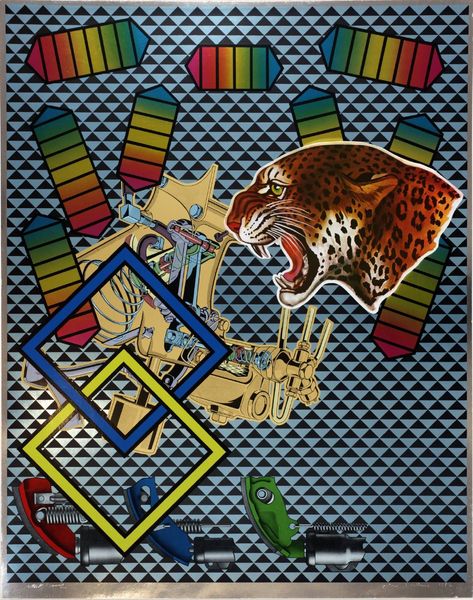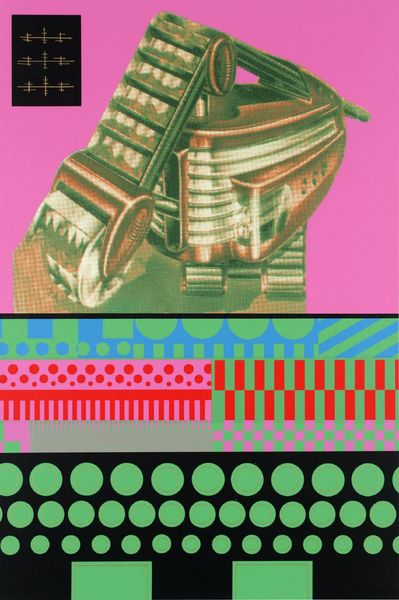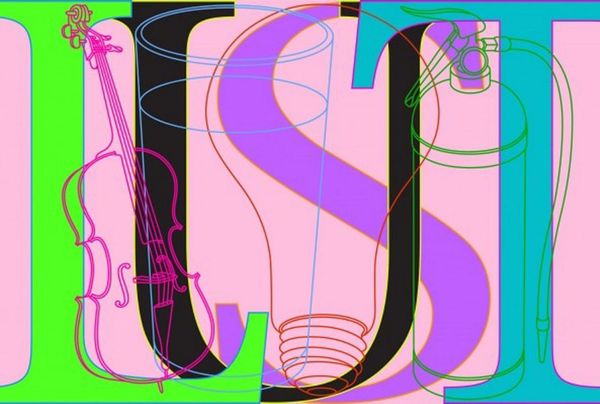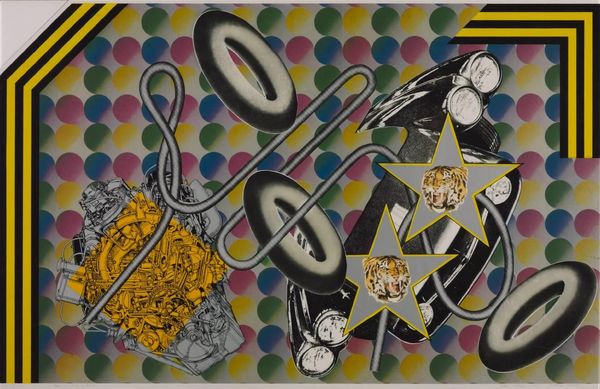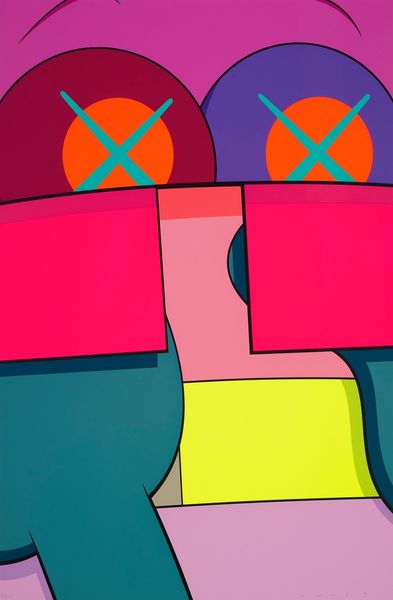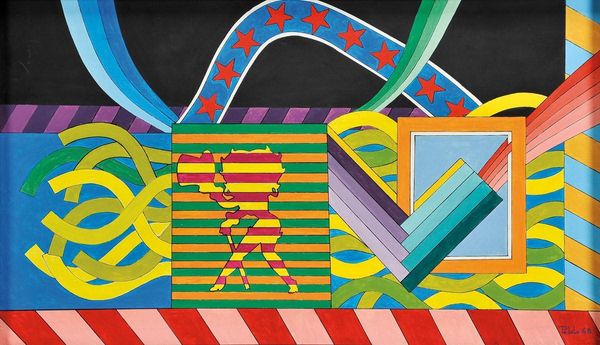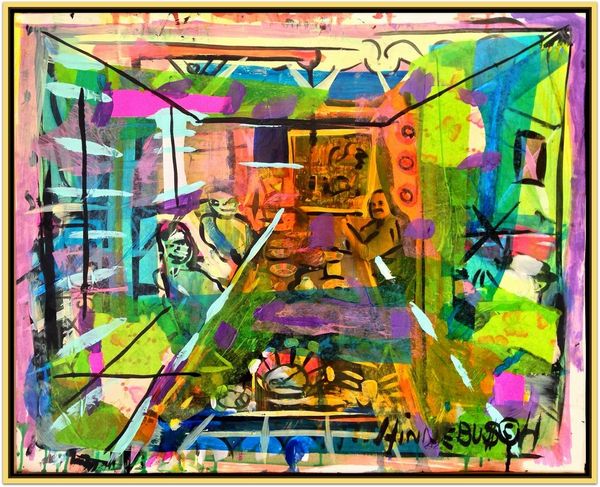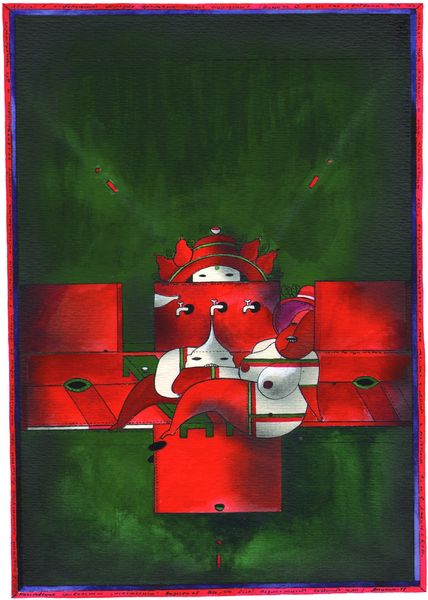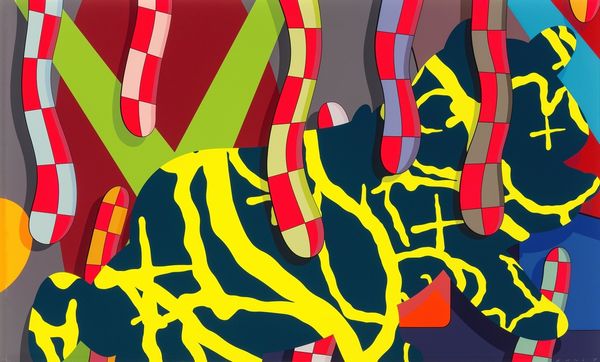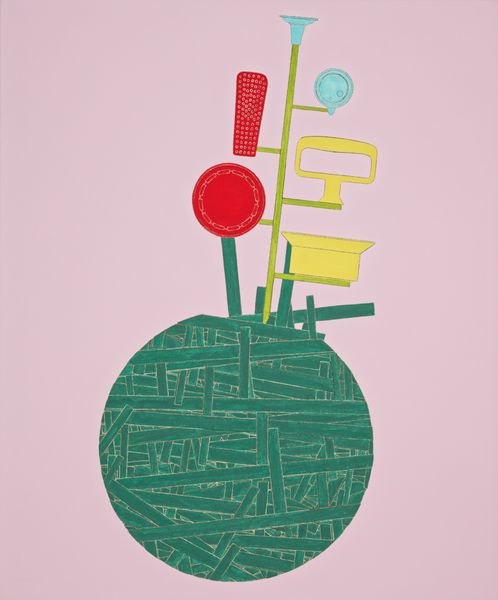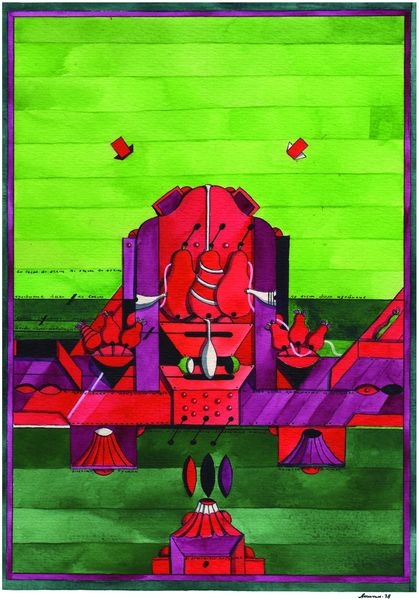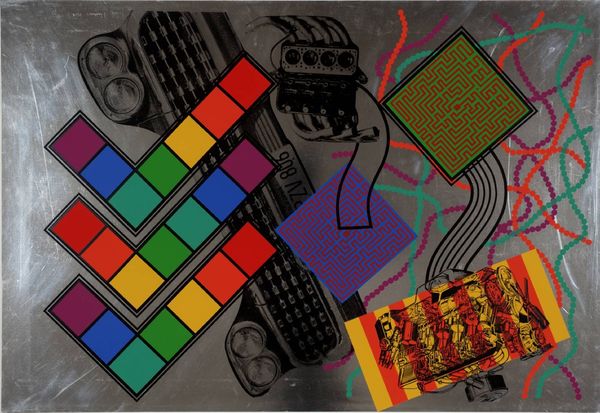
Copyright: Peter Phillips,Fair Use
Curator: Let's explore Peter Phillips’ "Spectrocoupling" from 1972, rendered with acrylic paint. What strikes you immediately? Editor: Well, it screams Pop Art! All those bright colors and geometric shapes feel really dynamic, but also strangely detached. It’s as if mechanical processes and consumer products have exploded onto the canvas in a playful, yet unsettling way. Curator: Right, Phillips was part of the British Pop Art movement, grappling with post-war consumer culture. It's critical to consider the materials and processes involved. He uses acrylic, which allowed for those intensely saturated colors and smooth, almost machine-like finishes. The flat application lacks any expressive brushwork. Editor: Exactly, that deliberate flatness emphasizes the artificiality of the imagery. It pulls in the aesthetics of commercial printing, playing with the mass production and distribution inherent to Pop Art. Looking at it through the lens of the early 70s, you’ve got a society obsessed with technological progress while simultaneously feeling alienated by it. How do the institutions of art back then frame it, you know? Curator: In terms of Phillips' context, his inclusion in influential exhibitions like "The New Generation" positioned him at the forefront of redefining the gallery space, breaking from traditional notions. The commodification of this avant-garde art allowed the style to permeate society, informing advertising and design. The canvas then serves almost as documentation. Editor: So, it’s about pushing boundaries within art institutions while commenting on how those institutions themselves perpetuate this cycle of consumerism. It almost seems like "Spectrocoupling" anticipates a world of screens, with layering and the vibrant design reflecting that visual language we find normalized today. There is something very contemporary feeling, I must say. Curator: Yes. His adoption of these new, synthetic materials democratized art-making by eliminating highly trained craftsmanship. Anyone could conceivably produce this artwork, questioning the idea of the artist genius as well. Editor: So this tension – machine-made versus hand-painted—forces the audience to confront the labor involved. It adds another layer, questioning not just 'what' is being shown, but 'how' and 'why.' Food for thought indeed. Curator: Agreed. “Spectrocoupling,” using the language of consumerism, speaks volumes about the era's shifting societal values and the mechanics that upheld those new realities.
Comments
No comments
Be the first to comment and join the conversation on the ultimate creative platform.
